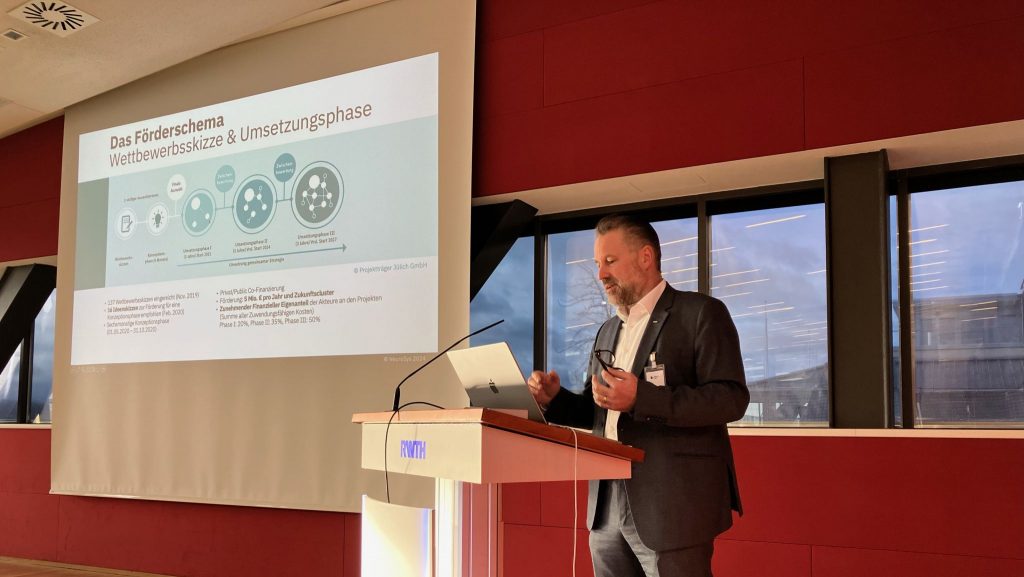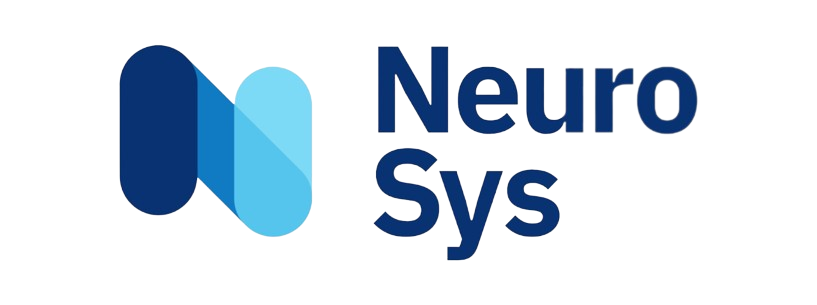
Our Projects
Development of new AI hardware
The NeuroSys future cluster encompasses the entire value chain in five projects and is thus driving forward development in the individual areas. Cross-project collaboration enables the joint design of materials, components, algorithms/hardware and applications. Our goal is to achieve technological independence for Europe in the field of AI hardware.
Projact A:
Memristor crossbar architectures
Project leader: Prof. Waser, RWTH Aachen University, Institute for Materials in Electrical Engineering 2 (IWE2)
This is based on the development of innovative components known as memristors. Memory and Resistorhave variable resistances that can be adjusted and stored using electrical pulses. They mimic biological synapses and are the basic elements for simultaneous computing and storage. In project A, the functionality of the memristors is being optimised and embedded with integrated circuits for neuromorphic hardware systems.
- RWTH Aachen University, Compound semiconductor technology (CST)
- Research Centre Jülich Electronic materials (PGI-7) and JARA-Institut Energieeffiziente Informationstechnologie (PGI-10)
- RWTH Aachen University, Chair of Electronic Components (ELD)
- RWTH Aachen University, Institute for Materials in Electrical Engineering II (IWE-2)
- aixACCT Systems GmbH
- AIXTRON SE
Project B:
Photonic neuromorphic circuits
Project leader: Prof Witzens, RWTH Aachen University, Chair of Integrated Photonics (IPH)
In addition to the electrical approach from project A, project B aims to realise neuromorphic hardware using integrated photonic circuits in which information is transmitted using light. Optical transmission systems enable extremely high data rates and a substantial reduction in latency times during signal transmission. The neuromorphic hardware system will be demonstrated in a silicon photonics chiplet, combined with ultra-high frequency electronics.
- RWTH Aachen University, Chair of Integrated Photonics (IPH)
- RWTH Aachen University, I. Institute of Physics (IA)
- AMO GmbH
- aiXscale Photonics UG
- Black Semiconductor GmbH
- Elmos Semiconductor SE
Project C:
Algorithm-Hardware Co-Design
Project leader: Prof Gemmeke, RWTH Aachen University, Chair of Integrated Digital Systems and Circuit Design (IDS)
Along the entire value chain, project C characterises the integrative bridging function between the technology-oriented projects A & B and the application-oriented project D. Project C develops neuromorphic hardware systems and special algorithms for neuromorphic computer systems. The investigation of the complex interactions between hardware and software development represents a highly innovative approach (co-design) of combined algorithm, component and circuit research. To this end, expertise from three interfaces is brought together: neuroscience, automated system design and hardware-related circuit development.
- RWTH Aachen University, Chair of Integrated Digital Systems and Circuit Design (IDS)
- RWTH Aachen University, Chair of Integrated Analogue Circuits (IAS)
- RWTH Aachen University, Chair of High Frequency Electronics (HFE)
- RWTH Aachen University, Chair of Software for Systems on Silicon (SSS)
- Research Centre Jülich Institute of Neuroscience and Medicine (INM-6)
- Research Centre Jülich Neuromorphic Compute Nodes (PGI-14)
- Research Centre Jülich Neuromorphic Software Ecosystems (PGI-15)
Project D:
Impulses through applications
Project leader: Prof. Leibe, RWTH Aachen University, Chair of Computer Science 13: Computer Vision (CVG)
Project D researches the properties of neural hardware and its optimal utilisation from the user perspective (application pull). This includes medical systems that enable improved therapy and diagnostics, as well as object recognition from speech and video, which have a wide range of uses in all areas of the economy. The technology transfer from science to industry takes place in the cluster through co-operation with regional companies, which bring the research results directly into application.
- RWTH Aachen University, Chair of Medical Information Technology (MedIT)
- RWTH Aachen University, Chair of Computer Science 6: Human Language Technology and Pattern Recognition (HLTPR)
- RWTH Aachen University, Chair of Computer Science 13: Computer Vision (CVG)
- RWTH Aachen University, Chair of Information Theory and Data Analytics (INDA)
- STAR Healthcare Management GmbH
- Gremse-IT GmbH
- Applications Technology – Apptek GmbH
- Clinomic Medical GmbH
Project E:
Innovation processes and business model development
Project manager: Prof Letmathe, RWTH Aachen University, Chair of Controlling
Project E completes the 5 interlinked projects from science, business and society. The accompanying innovation processes and business model developments are analysed to ensure long-term economic success and social and moral benefits. This type of strategy lays the foundations for subsequent transfer into business practice.
- RWTH Aachen University, Chair of Controlling
- RWTH Aachen University, Human Technology Center (HumTec)
- RWTH Aachen University, Teaching and research area Applied Ethics
- RWTH Aachen University, Chair of Electronic Components (ELD)
- RWTH Innovation GmbH
- Aachen Chamber of Industry and Commerce
